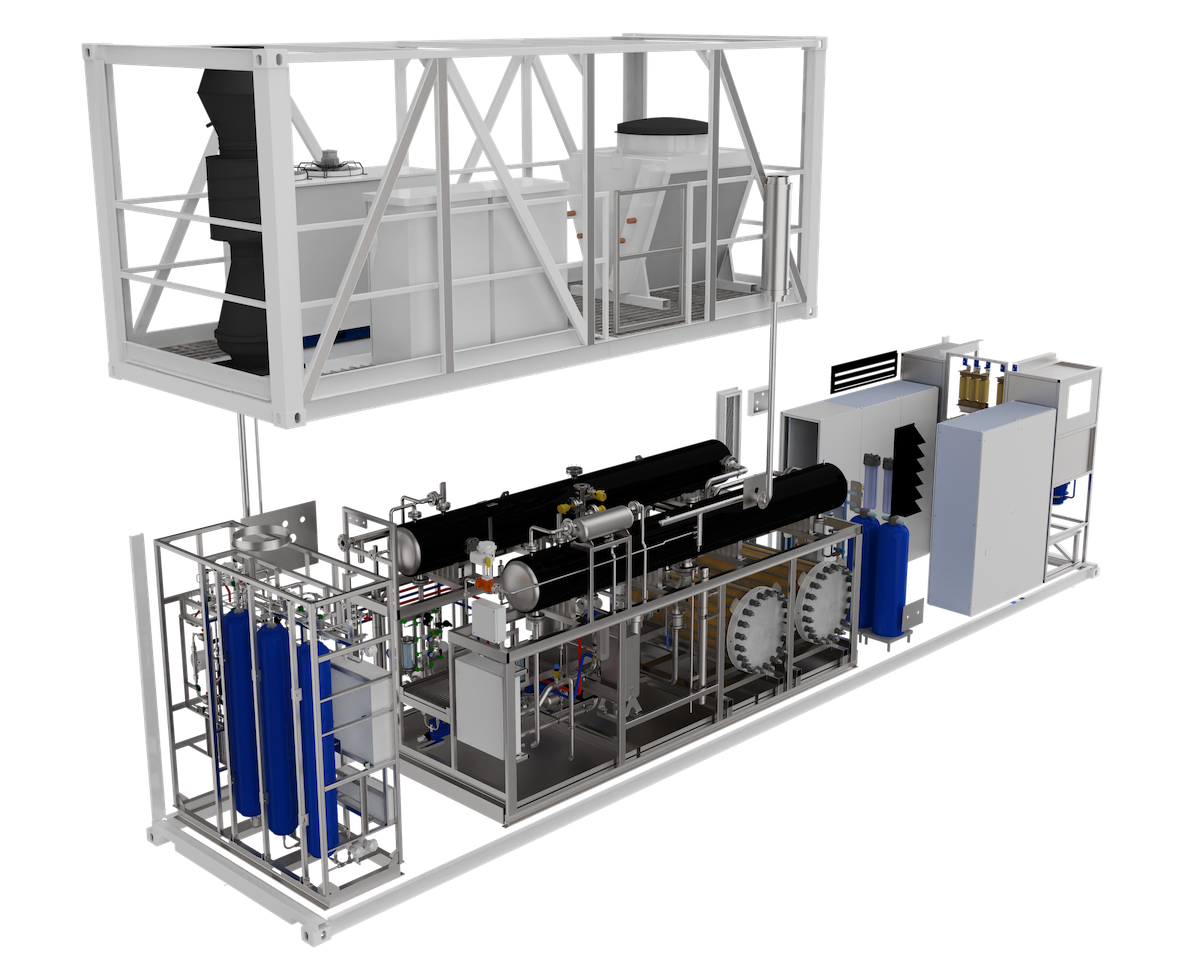The HyGGeTM 100A electrolyzer
The HyGGeTM 100A is a revolutionary electrolyzer, designed from scratch to enhance its robustness, efficiency, and lifespan. The system resides in a sturdy 40ft HighCube container, with a gas-tight wall separating the ATEX-zoned Process Room from the General Purpose Room. The Heat Exchange System is situated in a 20ft Rooftop Frame on top of the main unit.
The HyGGeTM 100A electrolyzer is highly secure, robust, and reliable, and can be conveniently handled using standard 40ft shipment and handling procedures. The system comprises two innovative Cell Stacks that collectively yield a nominal flow of 100Nm³/h of hydrogen at 30barg.

“We designed the HyGGeTM 100A electrolyzer from the ground up to enhance the robustness and efficiency of every single part and process.”
Roel De Maeyer – CEO Exion Hydrogen
Discover the parts of our electrolyzer solution
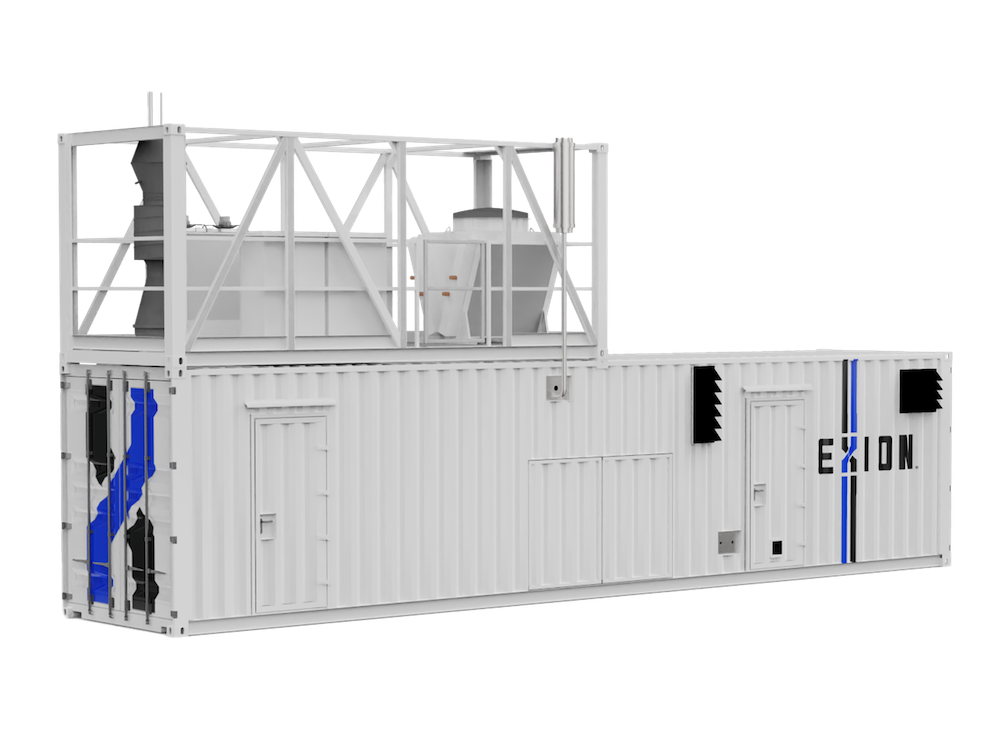
Main Electrolyzer Unit Housing
The HyGGeTM 100A electrolyzer is housed in a sturdy 40ft HighCube container, featuring a metal floor, insulated walls and ceilings, and ample air inlets and outlets to ensure optimal ventilation. A gas-tight wall separates the container into an ATEX-zoned section where water is split into hydrogen and oxygen, and a General Purpose Room with all electrical, control, and water handling equipment. Transporting the unit is convenient with standard ISO shipment and handling procedures.
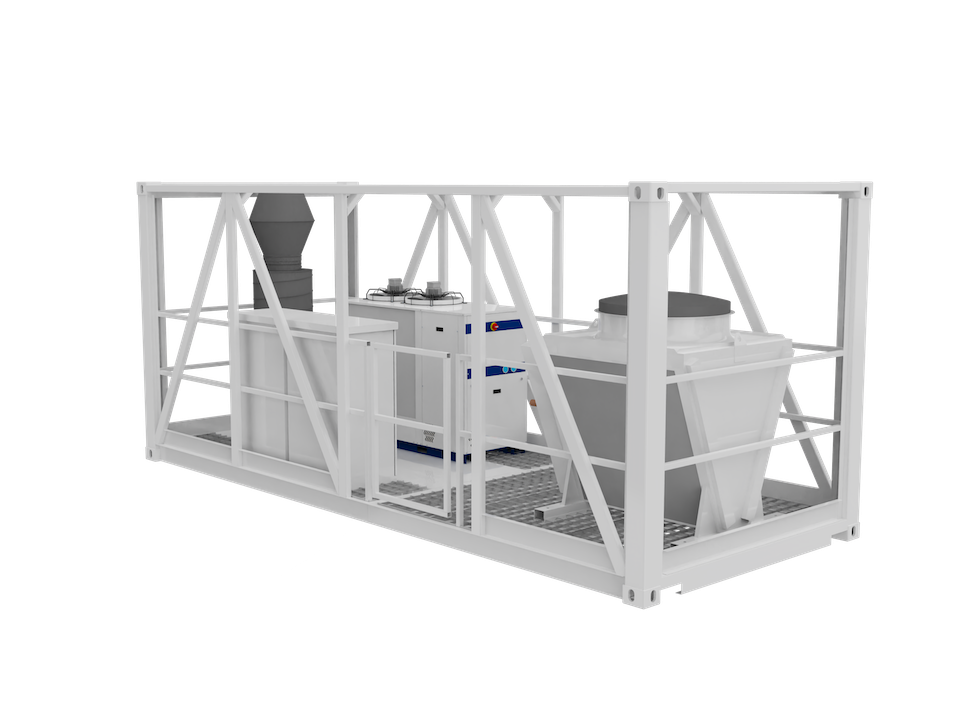
Electrolyzer Rooftop Frame
The 20ft open frame on top of the main unit houses the Heat Exchange System (HXS) and the Power Distribution System (PDS). The HXS includes a Dry Cooler for electrolyte/system cooling, and a Chiller for cooling the oxygen and hydrogen in the Gas Purification Module. The PDS comprises pump control systems for the dry cooler and chiller, circulation heater controls to keep the HyGGeTM 100A electrolyzer frost-free when not in use, ventilation outlets, and an electrical control panel.
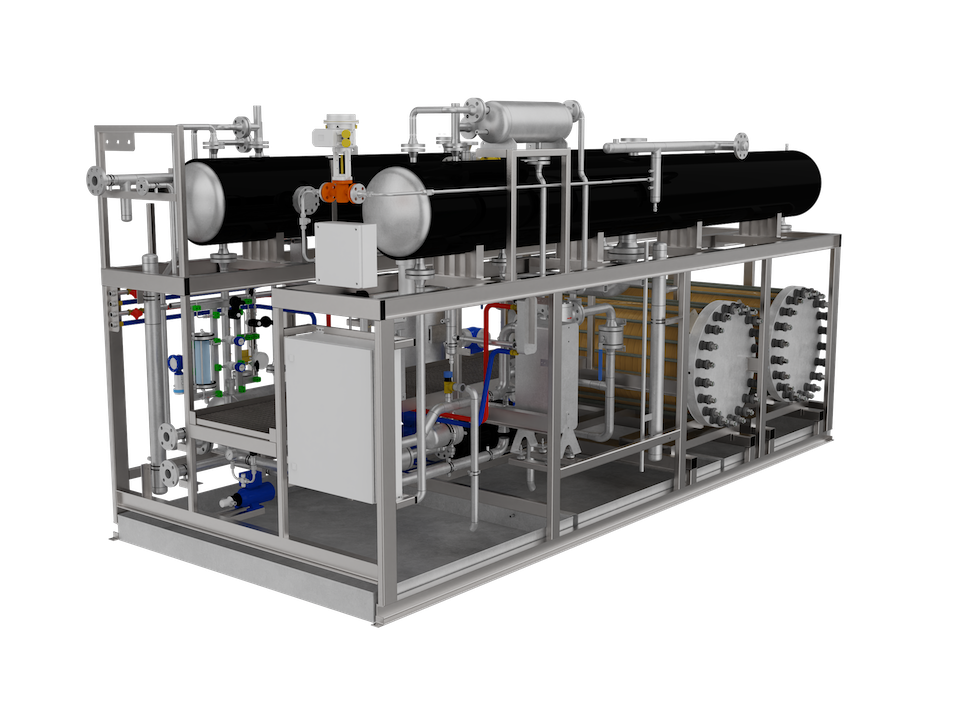
Gas Generation Module
This is the heart of the HyGGeTM 100A electrolyzer, featuring 2 innovative Cell Stacks to split water into hydrogen and oxygen. The Gas Generation Module contains all equipment to allow hydrogen generation at 30 barg under controlled conditions. For the Cell Stacks to work effectively, it is needed to create an alkaline solution by adding KOH. The primary circuit of the Cell Stacks is referred to as ‘the electrolyte loop’. The hydrogen and oxygen gases produced leave the electrolyte in gas liquid separators. Next, both gases undergo demineralized water washing to eliminate any residual KOH. The hydrogen is consequently led downstream to the Gas Purification Module while oxygen is released to the atmosphere.

Cell Stacks
Our cell stacks are engineered to operate at a nominal pressure of 30 bar, generating 50Nm³/h of hydrogen and 25Nm³/h of oxygen. Consequently, each HyGGeTM 100A electrolyzer yields a nominal flow of 100Nm³/h of hydrogen at 30 barg. Our R&D team has integrated smart reinforcements into the design, while our production team uses only the most durable materials. This minimizes the risk of deformations under pressure, thereby enhancing the efficiency and lifespan of our cell stacks compared to others in the market.
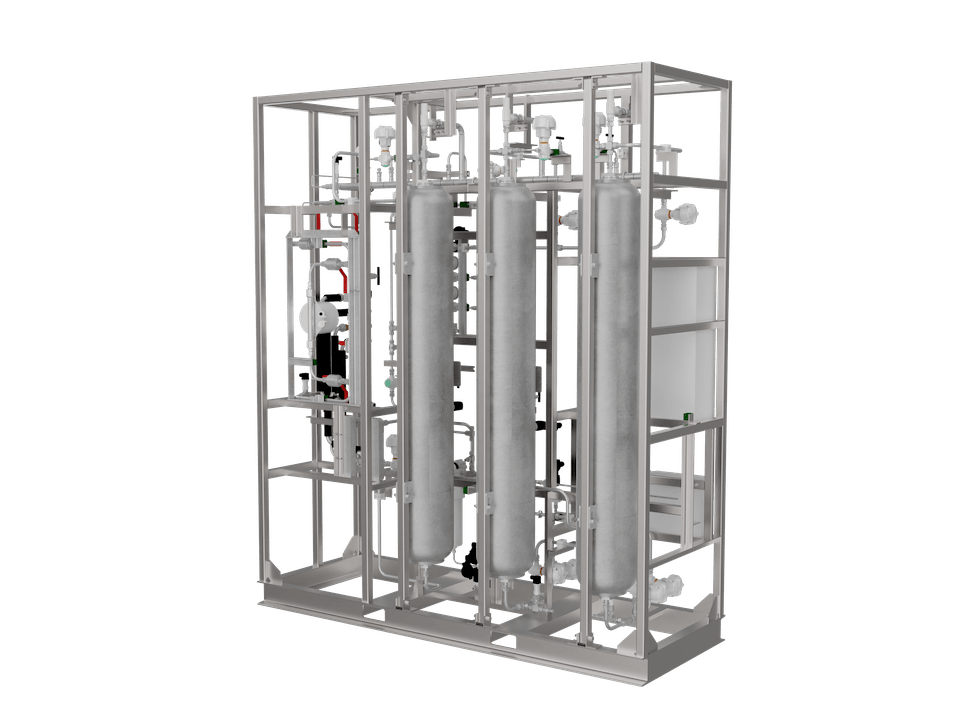
Gas Purification Module
The gas from the Gas Generation Module undergoes additional purification in two stages. Initially, a DeOxo vessel with a Palladium catalyst on a ceramic carrier is used to bond the oxygen and hydrogen molecules in the hydrogen flow. The vessel’s operational temperature provides an accurate measure of oxygen content. Subsequently, two dryer vessels with Molecular Sieve are used to extract resulting water from the hydrogen flow, leaving a hydrogen gas with water content not exceeding 2ppm.
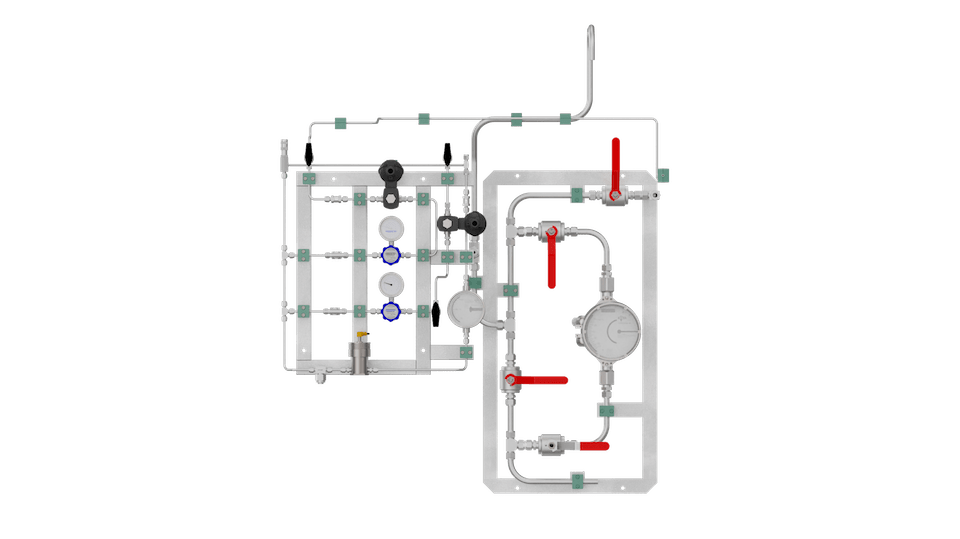
Gas Quality Control Panel
This panel indicates the Hydrogen Transmitter in Oxygen (HTO), the Oxygen Transmitter in Hydrogen before and after the gas purification (OTH1 and OTH2), and the Mass Flow Measurement (MFM) or gas output of the system. The HTO, or the percentage of hydrogen content in the oxygen flow, should never reach the Lower Explosion Limit (LEL) of 4% to avoid explosive mixtures. Therefore, the system provides a warning when the HTO reaches 1.5% and initiates a safe shutdown routine when the HTO reaches 1.75%.
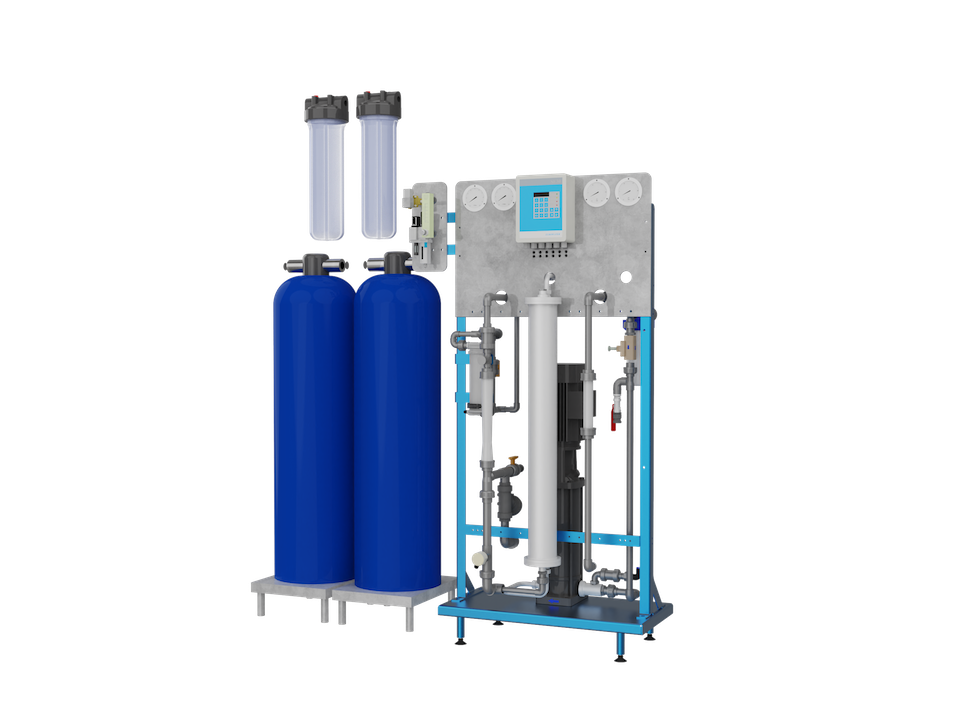
Water Purification System
The HyGGeTM 100A electrolyzer uses regular tap water as the source for hydrogen production. To prevent minerals and other impurities from contaminating the electrolysis process, the feed water undergoes filtration through a particle filter, an activated carbon filter, a reverse osmosis membrane, and a mixed bed. After a final anti-scaling treatment, the treated feed water can be used for electrolysis. The by-product of this process is still clean water but with an elevated mineral content.
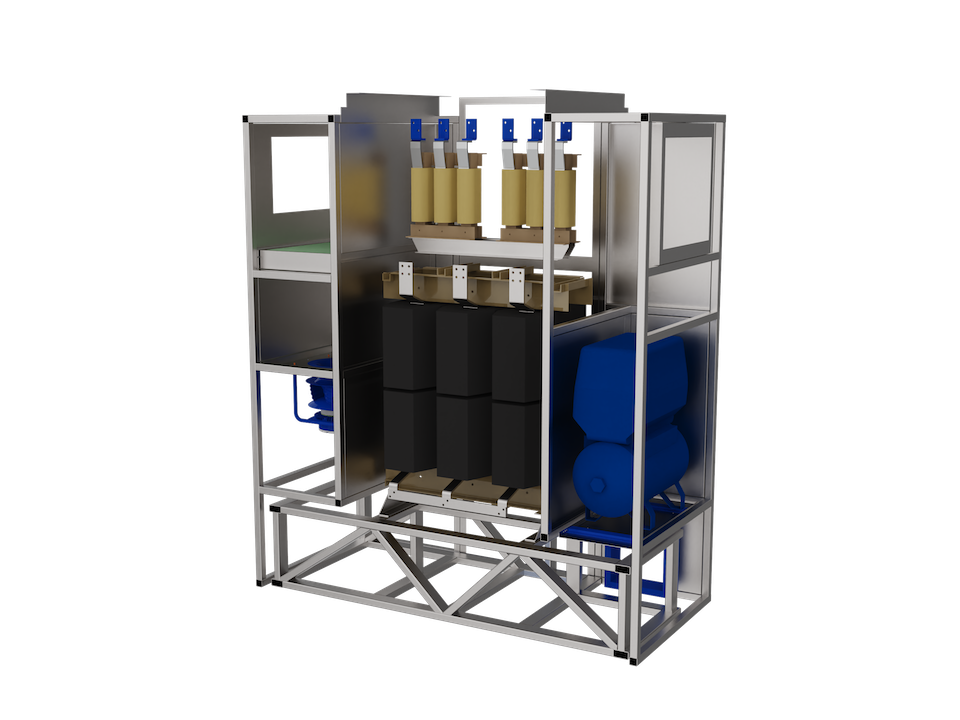
Power Supply
A transformer and a rectifier convert standard 400V AC power into regulated DC power to operate the Cell Stacks. The dry-type or air-cooled transformer is reliable, robust and requires minimal maintenance as it lacks moving parts. The controlled rectifier comprises two cabinets, one for each Cell Stack. Voltage, frequency, and network architecture can be tailored to accommodate customer specific requirements.
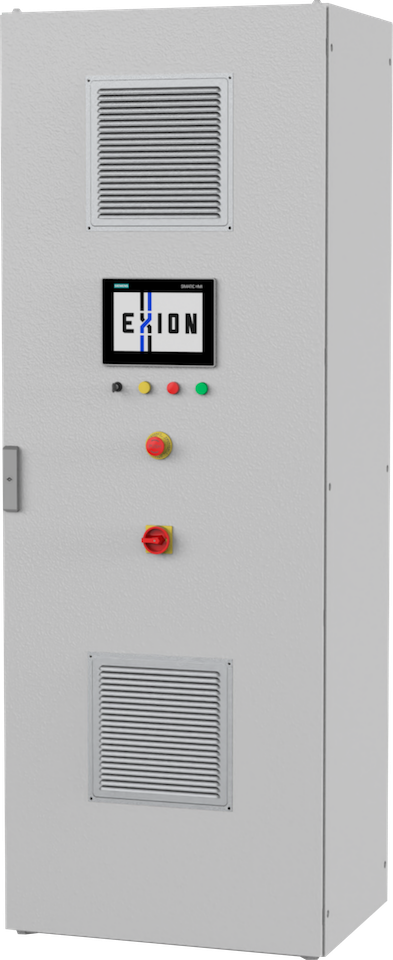
Control System
The Main Power Distribution Cabinet is situated in the Utility Room, adjacent to the transformer. Within the cabinet, a Data Control Module houses a standard PLC and a safety PLC responsible for valve operation and flow control throughout the system, guided by feedback from all instruments. This enables secure autonomous system operation. The Data Control Module includes main and emergency switches. The Control System is also remotely accessible via an intuitive Graphical User Interface.
Electrolyzer Project timeline
Transfer of ownership.
Use the arrows to move left or right through the timeline.
Agreement
- We listen to your needs, special requirements, and expectations.
- We align on our scope of supply and services.
- The commercial agreement is in force.
- We plan the different steps of the project with you.
- You prepare the site where the water electrolyzer will be delivered.
FAT (Factory Acceptance Test)
- We build your HyGGeTM 100A water electrolyzer.
- We conduct all our quality checks.
- We prepare the system for a performance test in our facilities.
- We invite you to witness the performance test prior to shipment.
Delivery
- We ship your HyGGeTM 100A water electrolyzer to your premises.
- We can assist with unloading and positioning.
- You unpack and inspect the system.
Installation
- You ensure that all required civil works are finished.
- You ensure that all necessary permits are obtained.
- You connect the equipment to your site’s facilities.
- You fill up the cooling systems.
- You make other utilities and tools available.
- We can assist you in all stages.
Commissioning
- An Exion Hydrogen service engineer checks the installation.
- Our service engineer conducts functional tests.
- Our service engineer performs a Site Acceptance Test (SAT)
- We train your team to operate and maintain the system.
- We initiate the warranty period of the system.
Maintenance
- Your team performs daily visual checks on the system.
- Every 6 months, your team will conduct preventive maintenance.
- Every 6 months, your team will calibrate the measuring devices.
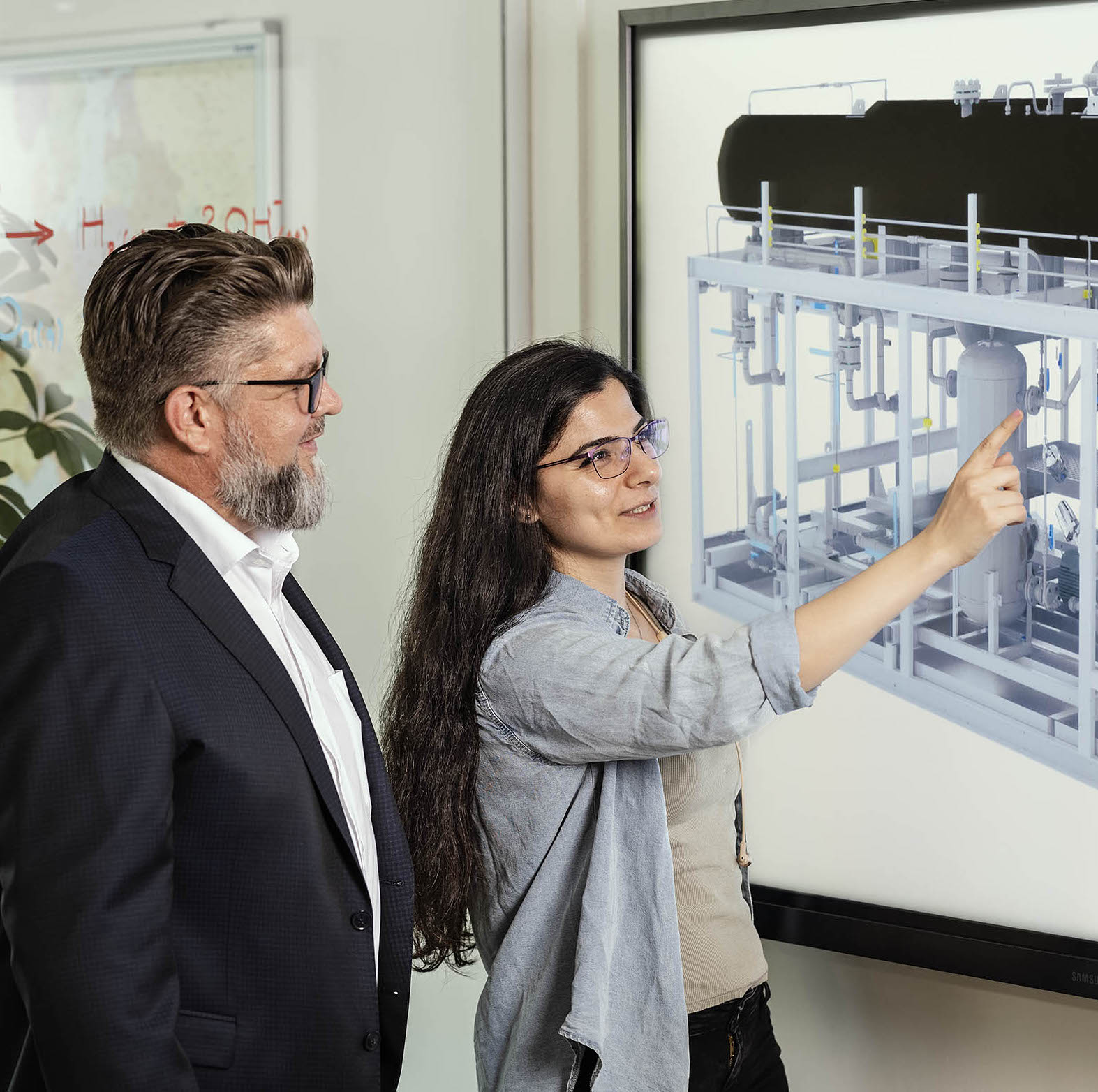
Information for industrial gas suppliers
We understand that every situation is unique and that operating sophisticated equipment such as the HyGGeTM 100A requires a specific level of attention and expertise from the end user. While we have the skills and tools to support our customers, our resource availability is limited, particularly when our electrolyzers are deployed on remote locations.
From the moment of reaching an agreement to the very distant future of decommissioning the equipment, we value long-term partnerships with companies who can help us serve our customers.
Do you have a strong and reliable technical team that wants to participate in one or more steps of our product and service development roadmap? We eagerly anticipate discussing the potential for a sustainable and ongoing business partnership with you.
Quick FAQ'S
What is hydrogen? How can it be produced? And how can you guarantee the availability of hydrogen, even on your most remote production sites? Find the answers to some of the most frequently asked questions in our field of expertise: electrolyzers.
How is Hydrogen produced?
Natural hydrogen (also known as ‘white’ hydrogen) can be found worldwide, yet it is not easily extracted. Fortunately, hydrogen is also widely available in compound forms. For instance, water (H2O), fossil fuels, and natural oils all contain hydrogen. This hydrogen can be extracted by breaking the molecular bonds and isolating the H2 molecules as a result. Unfortunately, this process often leads to the formation of polluting molecules such as NOx, CO, and CO2.
At present, most hydrogen is obtained by ‘cracking’ methane (CH4) through Steam Methane Reforming. While this process isolates the H2 molecule, it also causes the carbon to combine with oxygen, resulting in approximately 8 to 10 kg of CO2 for every kilogram of hydrogen produced. This has a significant environmental impact.
Fortunately, hydrogen production through water electrolysis (as achieved with our HyGGeTM water electrolyzers) does not have such a negative effect on the environment. In fact, if our HyGGeTM units are powered by renewable energy sources like solar or wind energy, the electrolysis process generates ‘green’ hydrogen – the most environmentally friendly form of H2, second only to natural or white hydrogen.
Does hydrogen come in different colors?
Hydrogen is colorless, but color coding is used to indicate the environmental impact of different hydrogen production methods. The following terminology refers to hydrogen production, arranged from the least environmentally impactful to the most:
- White Hydrogen: H2 from Earth’s internals. This is very challenging to harvest.
- Green Hydrogen: H2 from water electrolysis using renewable energy (wind, solar…) without any CO2 emissions.
- Pink Hydrogen: Electrolytic hydrogen produced with nuclear power.
- Turquoise Hydrogen: Hydrogen produced by thermal methane splitting (methane pyrolysis) with solid carbon as a by-product. It is very challenging to keep the production process at 1000°C.
- Blue Hydrogen: Hydrogen produced from fossil fuels, where the CO2 is captured and stored, or used in a different process (i.e., not released in the atmosphere).
- Brown Hydrogen: Hydrogen produced as a by-product of industrial processes.
- Grey Hydrogen: Hydrogen extracted from Natural Gas (CH4) using Steam-Methane Reforming (SMR). Most H2 gas is produced this way, with lots of CO2 as a by-product.
- Yellow Hydrogen: Electrolytic H2 from Grid energy, regardless of the energy mix.
- Black Hydrogen: Hydrogen from Coal Gasification. This produces lots of CO2.
Which is better? Pressurized or non-pressurized water electrolyzers?
Depending on your use of hydrogen, having it available at a specific pressure can be interesting. For processes operating at 3 bar, a 5 bar system might suffice if the electrolyzer meets demand consistently. Atmospheric electrolyzers always require an additional compression system, incurring an OpEx in addition to a CapEx. If you need hydrogen at higher pressure, e.g., in mobility applications, you will have to compress the gas.
A compressor is a ‘multiplier’ of the pressure. Typically, a compressor compresses up to 6 times the input pressure in a single stage. For instance, 10 bar input can yield 360 bar output of a 2-stage compressor. Starting at 30 bar input, you can reach 1000bar at the output after 2 stages (mobility), or 180bar after only 1 stage, which could be enough to fill bottles/racks.
What makes Exion’s HyGGe™ 100A water electrolyzer unique and valuable?
The HyGGeTM 100A water electrolyzer is unique because:
- It adheres to European Directives and the highest international safety standards.
- It runs on two newly designed cell stacks that are very robust, reliable, and efficient.
- The innovative design of our components mitigates the risk of deformations.
- We only use premium materials such as solid nickel stack elements, enhanced with catalytic coatings for improved efficiency and productivity.
- Since we use premium materials, our unit requires little or no maintenance.
- Our units can be combined. You will never have to overshoot or undershoot with water electrolyzers that are too large or too small for your requirements.
For more information, please contact Exion Hydrogen: sales@exionhydrogen.com
What makes Exion Hydrogen a unique valued hydrogen partner?
Exion Hydrogen is an experienced, reliable, and accountable partner for your business:
- Together, we have over 100 years of hydrogen production industry experience.
- We developed a new cell stack from scratch to make it more robust and efficient.
- We have an extremely experienced Research and Development (R&D) team.
- We have state-of-the-art production facilities and engineers.
- At Exion Hydrogen, you will always get sound advice from experienced engineers.
- We only use top-quality materials to make our electrolyzers more durable.
- Market expertise, offering direct delivery or through value-added third parties.
- We serve both end consumers and hydrogen (merchant gas) suppliers.
For more information, please contact Exion Hydrogen: sales@exionhydrogen.com
How do you calculate the business case for on-site hydrogen production?
Several factors determine the viability of on-site hydrogen production for your business:
- Electricity costs
In on-site water electrolysis for hydrogen production, your energy consumption will be your primary operational expenditure, significantly affecting the total cost of ownership.
- Required volume
Do you need large quantities of hydrogen, or do you seek to use abundant renewable energy (green electricity) for hydrogen production and subsequent storage as an energy source? This affects the required number of water electrolyzers to operate simultaneously.
- On-site storage availability
Do you have sufficient pipeline networks, silos, or other storage solutions to store all the hydrogen you will generate?
- Downtime cost
How much will it cost when your business halts due to hydrogen shortages? In other words, how valuable is it to achieve independence from external hydrogen suppliers, enabling your business to operate 24/7 through self-produced hydrogen?
- Comparison with other hydrogen sources
How does the above align with costs tied to alternative hydrogen sources, accounting for factors like geographic proximity to supply centers and supplier accessibility to your production sites?
For detailed calculations, please contact Exion Hydrogen: sales@exionhydrogen.com
